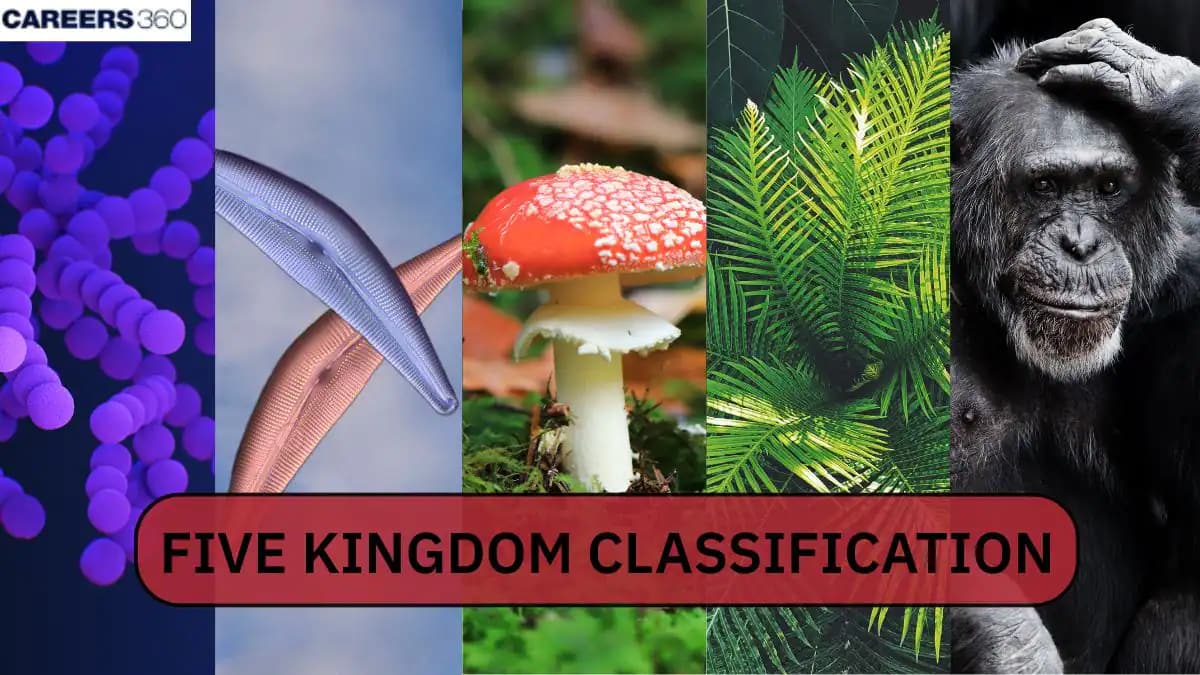NCERT Class 11 Biology Chapter 2 Notes Biological Classification- Download PDF Notes
Did you know that our world is home to countless tiny organisms, each playing an important role? In the NCERT Class 11 Biology Chapter 2 Notes Biological Classification, students will get simple points to make their basics stronger. Biological Classification explains how Whittaker’s five-kingdom classification groups organisms from monerans to fungi and protists. The NCERT Notes are a very useful resource for board exams as well as other entrance exams like NEET.
This Story also Contains
- NCERT Class 11 Biology Chapter 2 Biological Classification Notes: Download PDF
- Class 11 Biology Chapter 2 Biological Classification Notes
- Biological Classification: Previous Year Questions and Answers
- How to Use Biological Classification Class 11 Notes Effectively?
- Advantages of Class 11 Biology Chapter 2 Biological Classification Notes
- Chapter-Wise NCERT Class 11 Notes Biology
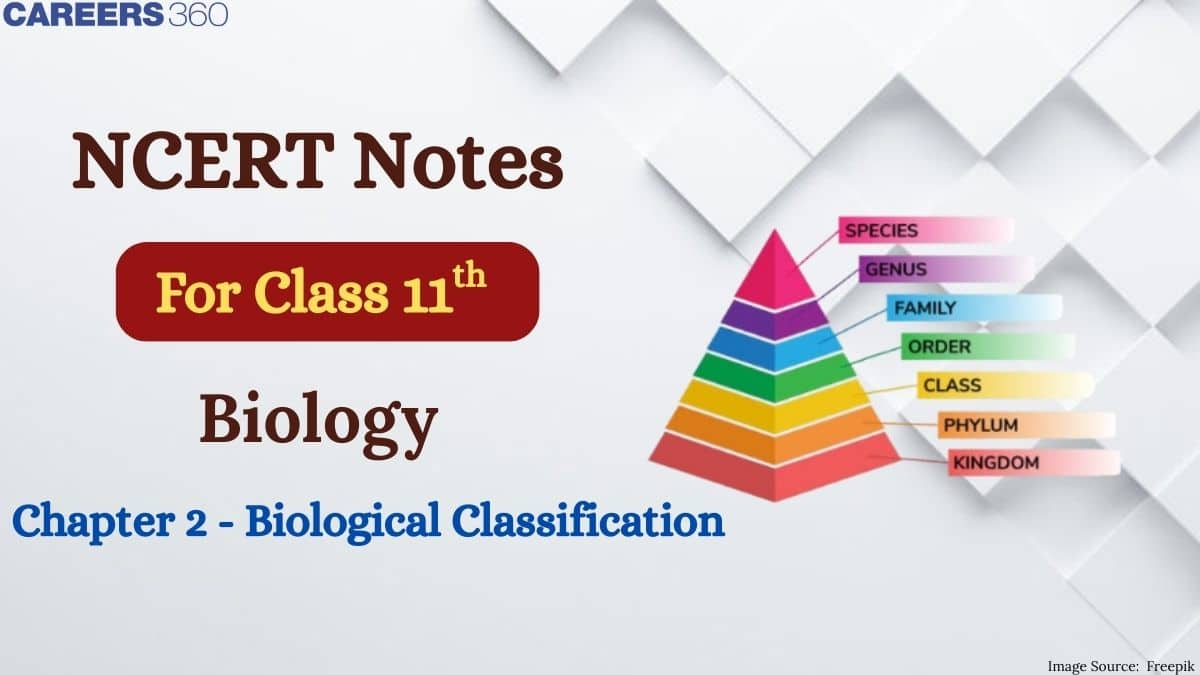
The NCERT Class 11 Biology Chapter 2 Notes describe the structure, nutrition, and distinguishing features of each group clearly and simply. The notes present the types and importance of biological classification in a detailed manner. Well-labelled diagrams, real-life examples and summaries of the complete chapter are provided. With the support of the NCERT Notes for Class 11, students can easily handle textbook questions with confidence.
NCERT Class 11 Biology Chapter 2 Biological Classification Notes: Download PDF
This chapter explains how living organisms are grouped into five kingdoms: Monera, Protista, Fungi, Plantae, and Animalia. It also covers topics about viruses, viroids, and lichens. Students can download the PDF of NCERT Class 11 Biology Chapter 2 Notes for offline study. Going through the NCERT Notes for Class 11 Biology helps students save time during the exam.
Also Read:
Class 11 Biology Chapter 2 Biological Classification Notes
Biological classification is the method of arranging organisms based on morphological, physiological, genetic, and evolutionary relationships. It helps in the systematic identification, study, and understanding of biodiversity. The NCERT Class 11 Biology Chapter 2 Notes are prepared according to the latest NCERT curriculum and cover the key concepts from the Biological Classification chapter.
Early Classification System
In the early stages, organisms were broadly classified into two kingdoms, Plantae and Animalia. However, the system had many limitations as it did not distinguish between prokaryotic and eukaryotic organisms or unicellular and multicellular forms.
Five Kingdom Classification
R.H. Whittaker, in 1969, proposed the five-kingdom classification, which is widely accepted.
The table compares and contrasts the five kingdoms' various qualities.
| Characters | Kingdoms | ||||
Monera | Protista | Fungi | Plantae | Animalia | |
Cell type | Prokaryotic | Eukaryotic | Eukaryotic | Eukaryotic | Eukaryotic |
Cell Wall and its components | Present, Peptidoglycan | Absent | Present, chitin | Present, cellulose | Absent |
Nuclear membrane | Absent | Present | Present | Present | Present |
Level of Organisation of the body | Unicellular | Unicellular | multicellular/ Yeast (Unicellular) | A multicellular body differentiated into tissue/organ | The multicellular body is differentiated into tissues/organs/organ systems. |
Mode of nutrition | Autotrophic and heterotrophic | Autotrophic and heterotrophic | Heterotrophic (Saprophytic or Parasitic) | Autotrophic (Exception: Cascuta shows parasitic nutrition) | Heterotrophic |
Kingdom Monera
Kingdom Monera includes prokaryotic unicellular organisms that lack a true nucleus and membrane-bound organelles. The genetic material is present as a nucleoid in the cytoplasm. In bacteria, the cell wall is made of peptidoglycan. Archaebacteria have different cell wall compositions, making them resistant to extreme conditions. Monerans reproduce asexually through binary fission, budding, etc. Some bacteria are autotrophic (photosynthetic or chemosynthetic), while others are heterotrophic (parasitic, saprophytic, or symbiotic). They play an important role in decomposition, nitrogen fixation, and biotechnology. Examples include E.coli, Lactobacillus, Nostoc, and Anabaena.
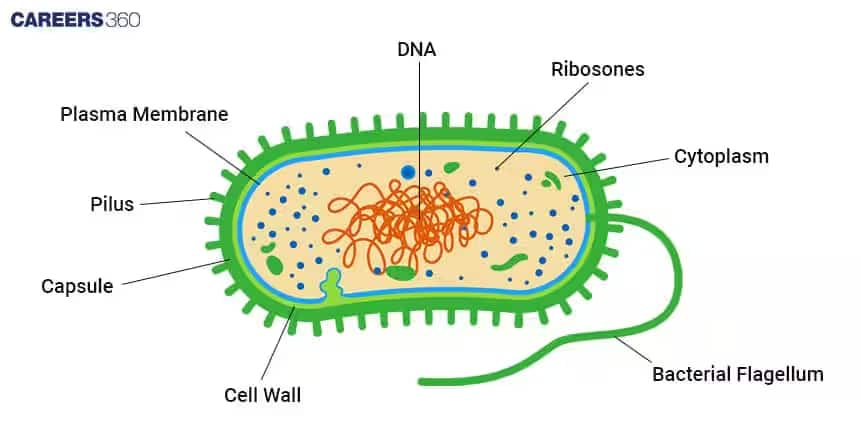
Kingdom Protista
The protist kingdom consists of unicellular eukaryotic organisms that exhibit animal-like, plant-like, or fungus-like characteristics. Protista are highly diverse and serve as a link between prokaryotes and multicellular eukaryotes. They reproduce asexually(binary fission, budding) and sexually(syngamy, conjugation). Some protists, like diatoms and dinoflagellates, are photosynthetic autotrophs, while others, like Amoeba and Paramecium, are heterotrophic and ingest food. Many protists, such as Plasmodium, Trypanosoma, and Euglena, have complex lives. Protists are commonly found in aquatic environments and play a key role in nutrient cycling and the food chain.
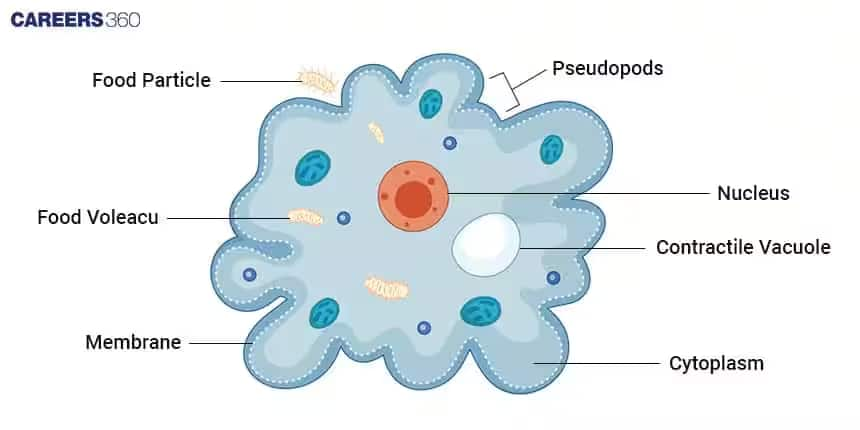
Chrysophytes
Chrysophytes, including diatoms and golden algae, are microscopic photosynthetic protists found in freshwater and marine environments. They have a silica-based cell wall known as the frustule, which forms diatomaceous earth over time. They reproduce both asexually and sexually and exhibit features of both plants and animals. Their ability to survive under extreme conditions makes them ecologically significant.
Dinoflagellates
Dinoflagellates are unicellular, mostly marine plankton that have two flagella, making them highly motile. Their cell walls contain cellulose and can be photosynthetic or heterotrophic. Some species also exhibit bioluminescence, producing a glow in the ocean at night. Examples include Gonyaulax, which causes red tides. They reproduce mainly by binary fission and are important in the marine food chain.
Euglenoids
Euglenoids, such as Euglena, are unicellular, flagellated protists found in freshwater. They are unique because they show both autotrophic and heterotrophic nutrition, depending on light availability. Instead of a cell wall, they have a protein-rich pellicle, giving them flexibility. They have an eye spot that helps them detect light for photosynthesis. They reproduce by binary fission and are important in aquatic ecosystems.
Slime Moulds
Slime moulds are fungus-like protists that exist as amoeboid single cells in favourable conditions but aggregate into a plasmodium under stress. They feed on organic matter, and bacteria play a role in decomposition. Slime moulds form fruiting bodies with spores during reproduction that are highly resistant to harsh conditions. They exhibit characteristics of both fungi and protists, making them an extraordinary link between the two groups.
Protozoans
Protozoans are unicellular heterotrophic protists found in water, soil, and as parasites in animals. They are classified into amoeboid, flagellated, ciliated, and sporozoans based on locomotion. Amoeboids, like Amoeba, move using pseudopodia, while flagellates, like Trypanosoma, use flagella. Ciliates such as Paramecium, which have cilia for movement and feeding, and sporozoans, like Plasmodium, cause diseases like Malaria.
Kingdom Fungi
Fungi are eukaryotic, multicellular, heterotrophic organisms with chitinous cell walls. Unlike plants, fungi do not perform photosynthesis. Instead, they obtain nutrients through saprophytic, paracytic, or symbiotic relationships. Kingdom fungi reproduce asexually via spores, budding, and fragmentation, and sexually through plasmogamy, karyogamy, and meiosis. They are important in decomposition, nutrient cycling, and medicine. Some fungi cause diseases in plants and animals. Common examples include mushrooms, yeast, Rhizopus, and Aspergillus.
Based on the mycelium mode of spore generation and fruiting bodies, fungi are categorised into distinct classes.
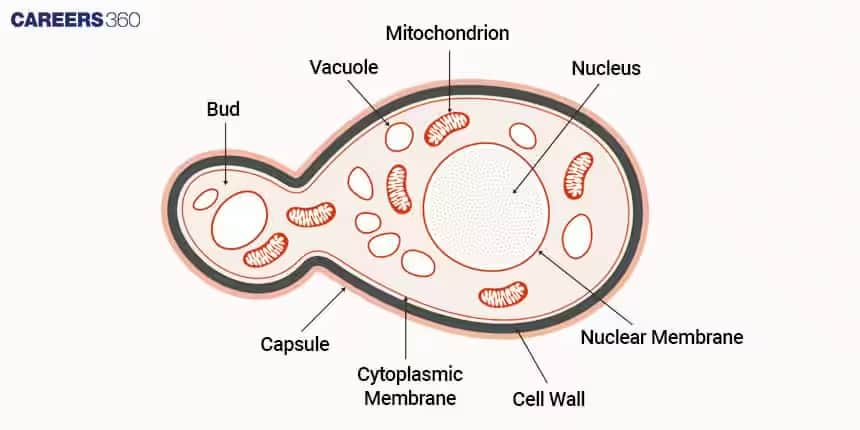
Phycomycetes
These are also called lower fungi, which include species like Rhizopus and Mucor. Phycomycetes are mostly aquatic or grow on decaying matter and reproduce through asexual (sporangiospores) and sexual (zygospores) methods that help in rapid growth. They play a role in decomposition and industrial processes like alcohol fermentation.
Ascomycetes
They are also known as sac fungi, including Penicillium, Saccharomyces, and Aspergillus. Ascomycetes reproduce asexually by conidia and sexually by forming ascospores in sac-like asci. They are decomposers and pathogens and are used in fermentation. They are important in baking and alcohol production, while Penicillium produces the antibiotic penicillin.
Basidiomycetes
Basidiomycetes, or club fungi, include mushrooms, puffballs, and rust fungi. Their characteristic feature is the basidium, where sexual spores, called basidiospores, are produced. They are mostly saprophytic or parasitic, decomposing organic matter or infecting plants. Many basidiomycetes, like Agaricus (mushrooms) are edible, while others cause plant diseases like rust or smuts.
Deuteromycetes
Deuteromycetes, or imperfect fungi, include species like Alternaria and Trichoderma. They reproduce only asexually by conidia, and the sexual stages are unknown. Many are pathogenic or decomposers, while some are beneficial in biocontrol and enzyme production. Trichoderma is used in agriculture for pest control, and Alternaria causes plant diseases like leaf spots.
Kingdom Plantae
Kingdom Plantae includes multicellular eukaryotic autotrophic organisms that perform photosynthesis using chlorophyll pigments. They have a cell wall made of cellulose and store food as starch. They play a fundamental role in oxygen production, carbon dioxide absorption, and food chains. They reproduce through seeds, spores, and vegetative propagation. They are the primary producers in the ecosystem and provide food, oxygen, medicine, and raw materials for human use. The kingdom is divided into major groups:
- Algae, which include simple aquatic photosynthetic organisms. Example- Chlamydomonas, Spirogyra
- Bryophytes, which include the first land plants that lack vascular tissue. Example- Moss, Liverworts
- Pteridophytes, which are the first vascular plants, reproduce through spores. Example- Ferns, Horsetails
- Gymnosperms are naked-seed plants with cones. Example- Pines, Cycads
- Angiosperms include flowering plants with fruits and seeds. Example- Mango, Rose, Wheat
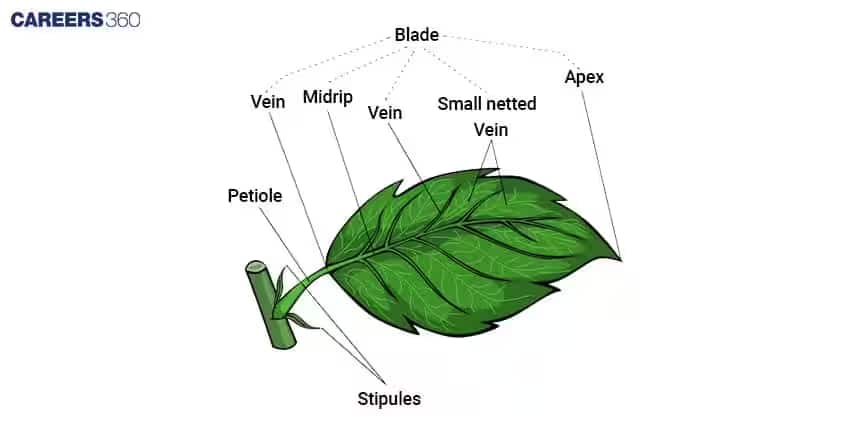
Kingdom Animalia
Kingdom Animalia consists of multicellular eukaryotic heterotrophic organisms that lack cell walls. Animals are classified based on body symmetry, germ layers, body cavities, and embryonic development. They reproduce asexually, with some species showing asexual reproduction (e.g., budding in Hydra). Animals are crucial for pollination, ecosystem stability, and the human economy through domestication, food production, and companionship. The kingdom is divided into invertebrates (without a backbone) and vertebrates (with a backbone). Examples of animal groups:
- Invertebrates, which include Porifera and Arthropoda
- Vertebrates that include Pisces and mammals
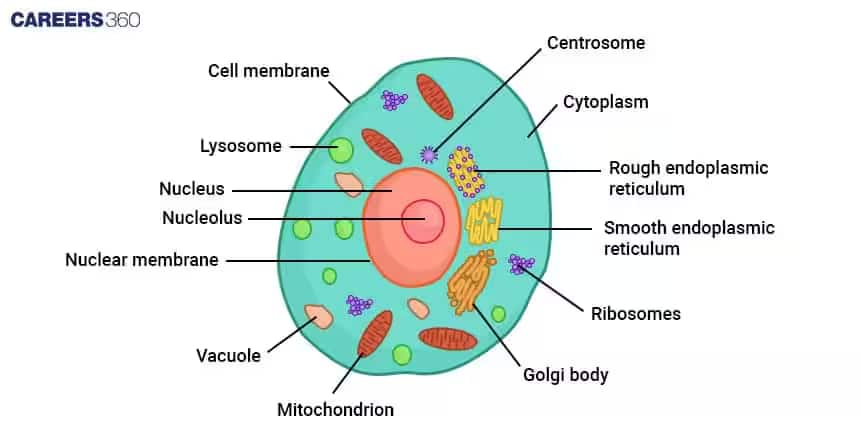
Viruses, Viroids, Prions, and Lichens
Viruses are non-cellular infectious agents that exist at the boundary of living and nonliving. Viruses consist of a protein coat called the capsid and genetic material, either DNA or RNA, but lack cellular structures like cytoplasm and organelles. They cannot reproduce independently and require a host to multiply, making them obligate parasites. Some common viral diseases include AIDS, influenza, hepatitis, and COVID-19 in humans. They reproduce through the lytic and lysogenic cycles using the host cellular machinery to generate new virus particles. Due to the ability to mutate rapidly, viruses are challenging to control and can cause pandemics.
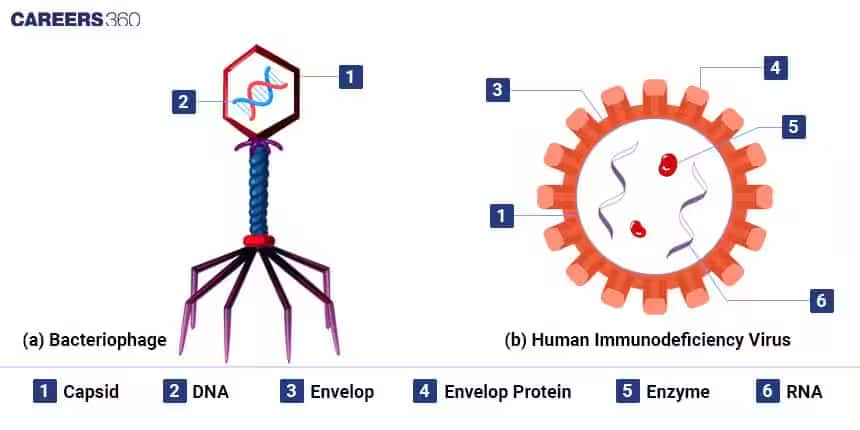
Viroids
Viroids are simple infectious agents consisting of a single-stranded circular RNA molecule without a protein coat.
- They are much smaller than viruses and were first discovered by T.O. Diener in 1971.
- Unlike viruses, viroids do not encode proteins and rely entirely on the host enzymes for replication.
- They mainly infect plants, causing severe agricultural diseases such as potato spindle tuber disease.
- Their exact mechanism of pathogenicity is still under research, but they interfere with normal RNA processing in the host.
- Since viroids lack a protective capsid, they are more susceptible to environmental conditions than viruses.
Lichens
Lichens are a symbiotic association between a fungus and algae, where the fungus provides structure and water, while the alga performs photosynthesis. They are found in extreme habitats such as rocks, tree trunks, and Arctic regions, playing an important role in soil formation and ecological balance. The lichens are classified into crustose, foliose, and fruticose lichens. They are bio-indicators of air pollution as they are highly sensitive to sulphur dioxide. Additionally, they are used in the production of perfumes and antibiotics due to their unique chemical properties.
Also, Read
Biological Classification: Previous Year Questions and Answers
Some of the questions that have come in past years from the chapter are given below. For better revision, students can also go through the Biological Classification Class 11 Notes to strengthen their concepts.
Question 1. Members of Phycomycetes are found in
i) Aquatic habitats
ii) On decaying wood
iii) Moist and damp places
iv) As obligate parasites on plants
Choose from the following options
Option 1. None of the above
Option 2. (i) and (iv)
Option 3. (ii) and (iii)
Option 4. All of the above
Answer :
Bread moulds belong to a class of fungi called phycomycetes. They can infect both humans and animals and are present in fruits, soil, and animal dung. Both sexual and asexual reproduction are possible in phycomycetes. Conidia or sporangia are formed during asexual reproduction, whereas an egg and sperm unite during sexual reproduction.
Hence, the correct answer is option (4): All of the above.
Question 2. Concerning the fungal sexual cycle, choose the correct sequence of events
Option 1. Karyogamy, plasmogamy, and meiosis
Option 2. Meiosis, plasmogamy, karyogamy
Option 3. Plasmogamy, karyogamy, and Meiosis
Option 4. Meiosis, karyogamy, and plasmogamy
Answer :
In the sexual cycle of fungi, the first event is plasmogamy, where the cytoplasm of two parent cells fuses. Next comes karyogamy, where their nuclei fuse to form a diploid nucleus. Finally, meiosis takes place to restore the haploid condition and form spores. This is the standard and correct sequence of fungal sexual reproduction.
Hence, the correct answer is option (3): Plasmogamy, karyogamy, meiosis.
Question 3. Viruses are non-cellular organisms, but replicate themselves once they infect the host cell. To which of the following kingdoms do viruses belong
Option 1. Monera
Option 2. Protista
Option 3. Fungi
Option 4. None of the above
Answer :
This is because viruses are considered to be living as well as non-living and therefore are not classified under any particular kingdom. Viruses exhibit characteristics of life, such as the ability to replicate, but they cannot carry out metabolic processes independently, which classifies them as non-living when outside a host. This dual nature complicates their classification in biological taxonomy.
Hence, the correct answer is option (4), none of the above.
Question 4. Pinus seed cannot germinate and establish without a fungal association. This is because
Option 1. Its embryo is immature
Option 2. It has an obligate association with mycorrhizae
Option 3. It has a very hard seed coat
Option 4. Its seed contains inhibitors that prevent germination
Answer :
The fungus associated with the roots of Pinus increased minerals & water absorption for the plant by increasing surface area. It also protects the seedling from soil-borne disease. Therefore, mycorrhizal association is obligatory for Pinus seed germination. This symbiotic relationship benefits the fungus as well, as it receives organic compounds produced by the plant.
Hence, the correct answer is option (2), It has an obligate association with mycorrhizae.
Question 5. Hydrocolloid carrageen is obtained from:
Option 1. Phaeophyceae and Rhodophyceae
Option 2. Rhodophyceae only
Option 3. Phaeophyceae only
Option 4. Chlorophyceae and Phaeophyceae
Answer :
Hydrocolloid carrageenan is sourced from red algae, primarily species of the class Rhodophyceae. Notable species that provide this substance include Kappaphycus alvarezii, Eucheuma denticulatum, and Chondrus crispus, commonly known as Irish moss. The key aspect to remember is that carrageenan is derived from the cellular structure of these algae.
Hence, the correct answer is option (2), Rhodophyceae only.
Also Read:
How to Use Biological Classification Class 11 Notes Effectively?
Studying classification becomes easier when revision is planned properly. A systematic approach allows students to understand concepts quickly and retain them for exams.
Start by revising the five-kingdom classification system, going through each kingdom in detail to build a strong base.
Use Class 11 Biology Chapter 2 Biological Classification Notes PDF to learn examples of Monera, Protista, Fungi, Plantae, and Animalia.
Practice flowcharts and diagrams regularly to connect features of different kingdoms and remember differences clearly.
Revise the characteristic features of viruses, viroids, lichens, and other exceptions by going through the Class 11 Biology Chapter 2 Biological Classification Notes.
Solve previous-year questions to apply the understanding of taxonomy and classification.
Advantages of Class 11 Biology Chapter 2 Biological Classification Notes
Studying through the organised notes helps students revise topics quickly and understand topics in a much better way. The notes offer several advantages, and some of them are given below:
- Class 11 Biology Chapter 2 Biological Classification Notes PDF provides a clear and concise summary of all chapters.
- Students can save a lot of time by going through these notes, as they help in doing a quick revision before exams.
- All the important terms and definitions of the Biological Classification chapter are highlighted, so that students can retain concepts for a longer time.
- Complex classification systems, such as the five-kingdom classification, are simplified to make students understand easily without any confusion.
Chapter-Wise NCERT Class 11 Notes Biology
Below is a complete list of chapter-wise notes for class 11 students. These notes simplify complex topics and offer a quick reference for board exams and entrance tests like NEET.
Frequently Asked Questions (FAQs)
The main topics which are very important and are covered in NCERT Class 11 Biology Chapter 2 Notes Biological Classification are as follows
Kingdom Monera
Kingdom Protista
Kingdom Plantae
Kingdom Animalia
Viruses, Viroids, Prions and Lichens
According to the NCERT Class 11 Biology Chapter 2 Notes Biological Classification, the majority of Euglenoids are freshwater creatures that live in stagnant water. They contain a protein-rich layer called a pellicle instead of a cell wall, which allows them to bend their bodies. They have two flagella, one that is short and the other that is long.
Cyanobacteria, also known as blue-green algae, are crucial in ecosystems as primary producers, oxygen producers, and nitrogen fixers, playing a vital role in the Earth's atmosphere and food webs.
Kingdom Protista organisms reproduce both asexually, primarily through binary fission, and sexually, often involving gamete fusion and meiosis.
Some bacteria are called autotrophic because they can synthesize their own food from inorganic sources, while others are heterotrophic because they obtain their nutrients by consuming organic matter from other organisms.
Fungi have numerous economic uses, including being a food source (like mushrooms), playing a crucial role in food and beverage production (like yeast in bread and beer), and providing materials for medicine (like antibiotics) and industry (like enzymes).
Modern organism classification, or taxonomy, relies on a combination of phylogeny (evolutionary relationships), morphology (physical structure), genetics, and physiology (function) to group organisms.
Popular Questions
Courses After 12th
Applications for Admissions are open.
As per latest syllabus. Physics formulas, equations, & laws of class 11 & 12th chapters
JEE Main Important Chemistry formulas
Get nowAs per latest syllabus. Chemistry formulas, equations, & laws of class 11 & 12th chapters
JEE Main high scoring chapters and topics
Get nowAs per latest 2024 syllabus. Study 40% syllabus and score upto 100% marks in JEE
JEE Main Important Mathematics Formulas
Get nowAs per latest syllabus. Maths formulas, equations, & theorems of class 11 & 12th chapters
